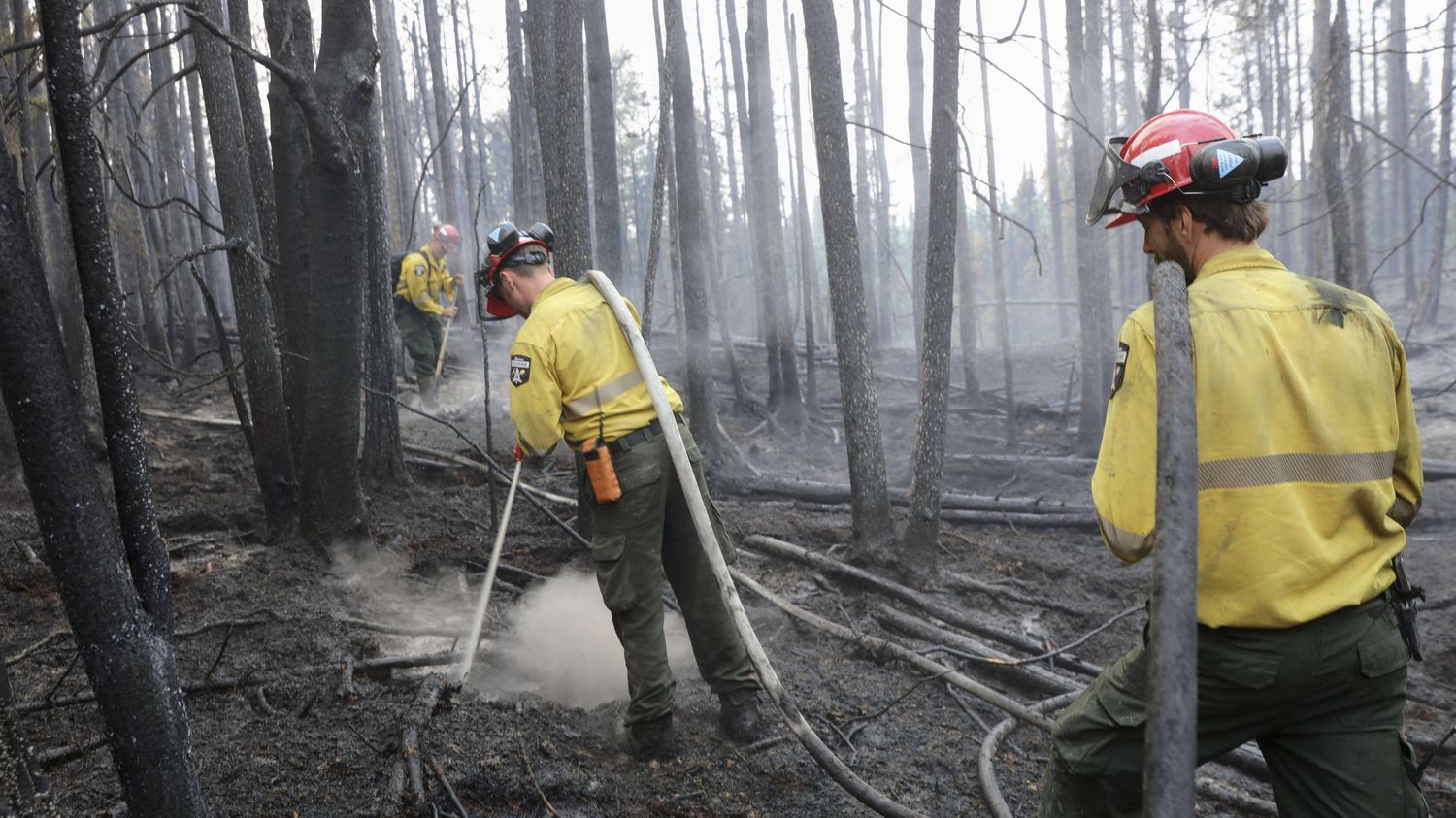In Alaska, nearly 250,000 hectares have already burned in 2024, half of which went up in smoke in a single fire that forced the closure of Denali National Park.

Published
Reading time: 4 min

After Turkey, California and Greece, Alaska, Canada and Russia are the most recent regions in the world exposed to particularly intense fires. Arctic ecosystems and boreal forests that cover a large part of the northern hemisphere continue to burn.
“The first half of July” saw a “remarkable intensification of emissions [de carbone] from wildfires in the Far East of Russia and in the boreal regions of North America”states the European Copernicus Institute in a bulletin published Tuesday, July 16 by its atmosphere monitoring service (Cams).
In Russia, the number of wildfires continues to increase, particularly in Siberia, NASA’s Earth Observatory notes in a blog post published on July 9. Satellite images from the American space agency show several fires in the regions of the Amur Oblast, the Republic of Sakha — both in the Far East of the country — and in Transbaikalia, a Russian mountainous region near Mongolia in eastern Siberia. The Russian Federal Forestry Agency noted in its bulletin of July 16 276 fires currently burning in these three territories. The flames have already ravaged a total of 620,000 hectares of forest. As NASA points out, these fires are starting in areas rich in peat, a fossilized organic material that has a high propensity to burn.
Also in the Russian Far East, Copernicus’ tools measured thicknesses “abnormally high” of fumes and concentrations of fine particles “several times higher than the 24-hour average exposure threshold (…) recommended by the World Health Organization.”As of July 15, estimated carbon emissions from wildfires in Russia have already exceeded the total June-July emissions of the previous two years”notes the Cams which scans the lights detectable by satellite.
Across the Bering Strait in Alaska, nearly 250,000 hectares have already burned in 2024. Just half of that area went up in smoke in a single wildfire, which closed Denali National Park in the southern part of the territory. The state’s National Park Service explained in a July 15 blog post that Alaska’s wildfire season runs from late May to late July. “On average, one million acres burn across the state each year.”the service specifies.

Further east, in Canada, After a year in 2023 where the number of hectares burned broke records, the fires have intensified since the beginning of July, particularly in the western provinces. In Alberta, the intensity of the fires is “very high compared to the 2003-2023 average, end of June – beginning of July”Copernicus notes. Local authorities counted 129 active fires as of July 16. Nationally, the Canadian Interagency Forest Fire Centre estimates that the country has lost 1.5 million hectares of forest since the beginning of the year.
Fires, mostly caused by lightning, are part of the natural cycle of the dense, hard-to-reach boreal forests. The Alaska National Park Service says they help to some extent “has release nutrients trapped in the soil and rejuvenate vegetation”.

However, these fires are fueled by the increasingly severe drought, a consequence of global warming, the human origin of which has been scientifically established. The month of jJune 2024 has become the hottest June ever recorded, breaking the record already set in 2023, warns the Copernicus climate change service.
“The number and intensity of fires have been increasing significantly over the past two decades as higher latitudes warm more rapidly than the rest of the planet.” due to climate change, the organization recalls. At the end of June, several scientists from the Australian University of Tasmania published a study in the journal Nature Ecology and Evolutionlooking at the number and intensity of forest fires. The researchers found that their frequency worldwide had been multiplied by 2.2 between 2003 and 2023. The temperate coniferous forests in the western United States and the boreal forests covering Alaska, northern Canada and Russia are particularly affected, with fire frequency increasing elevenfold and sevenfold respectively.
